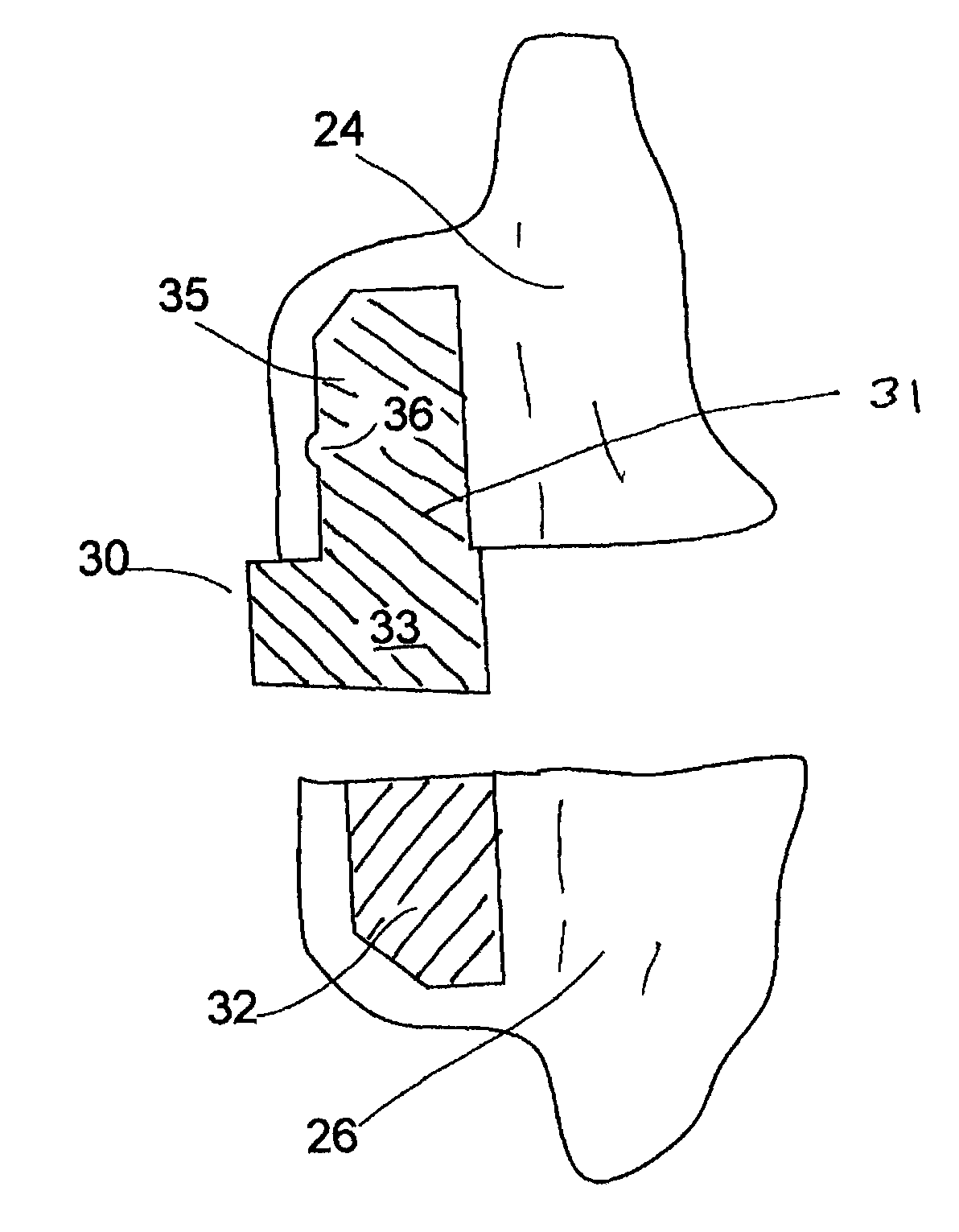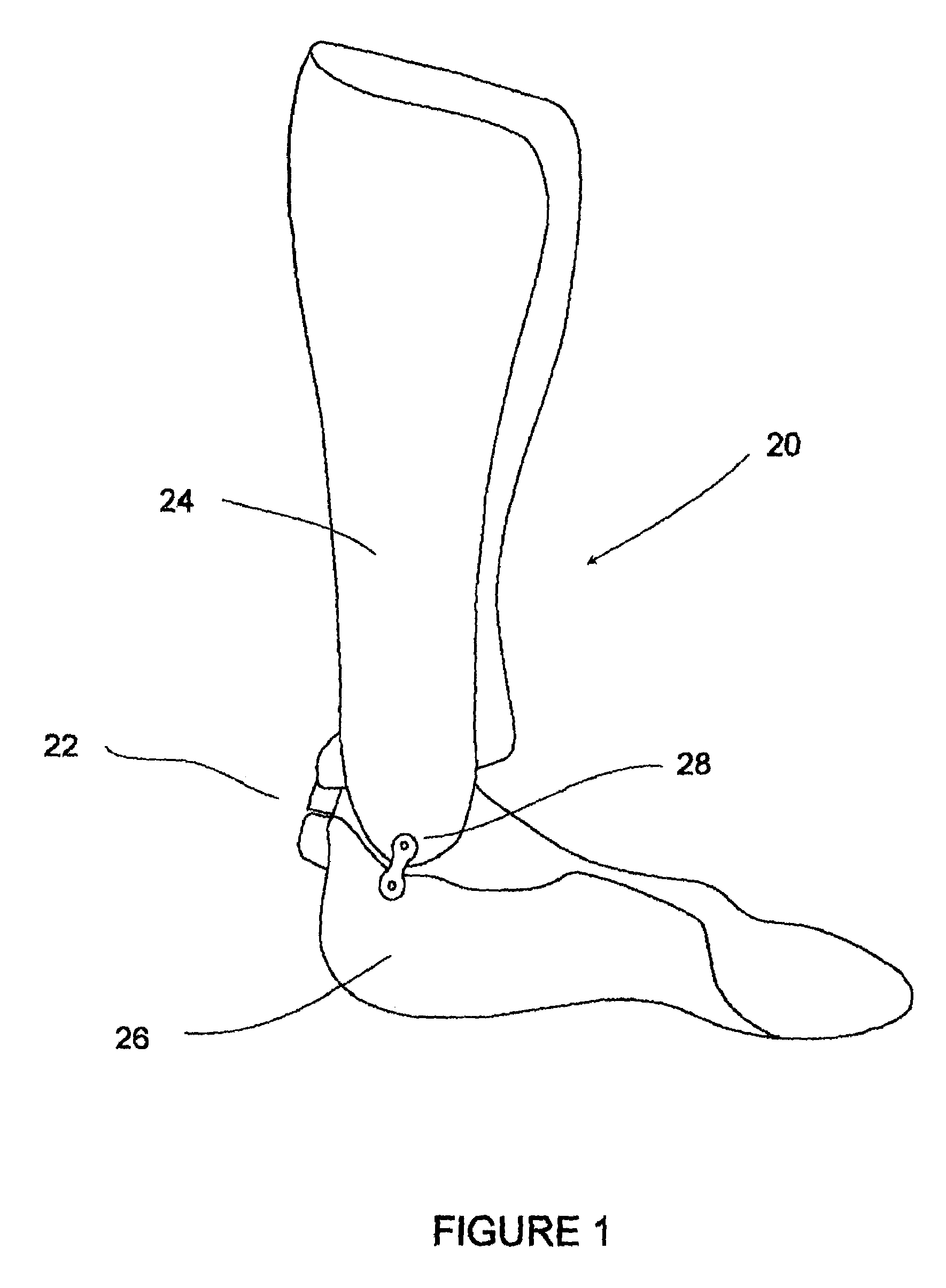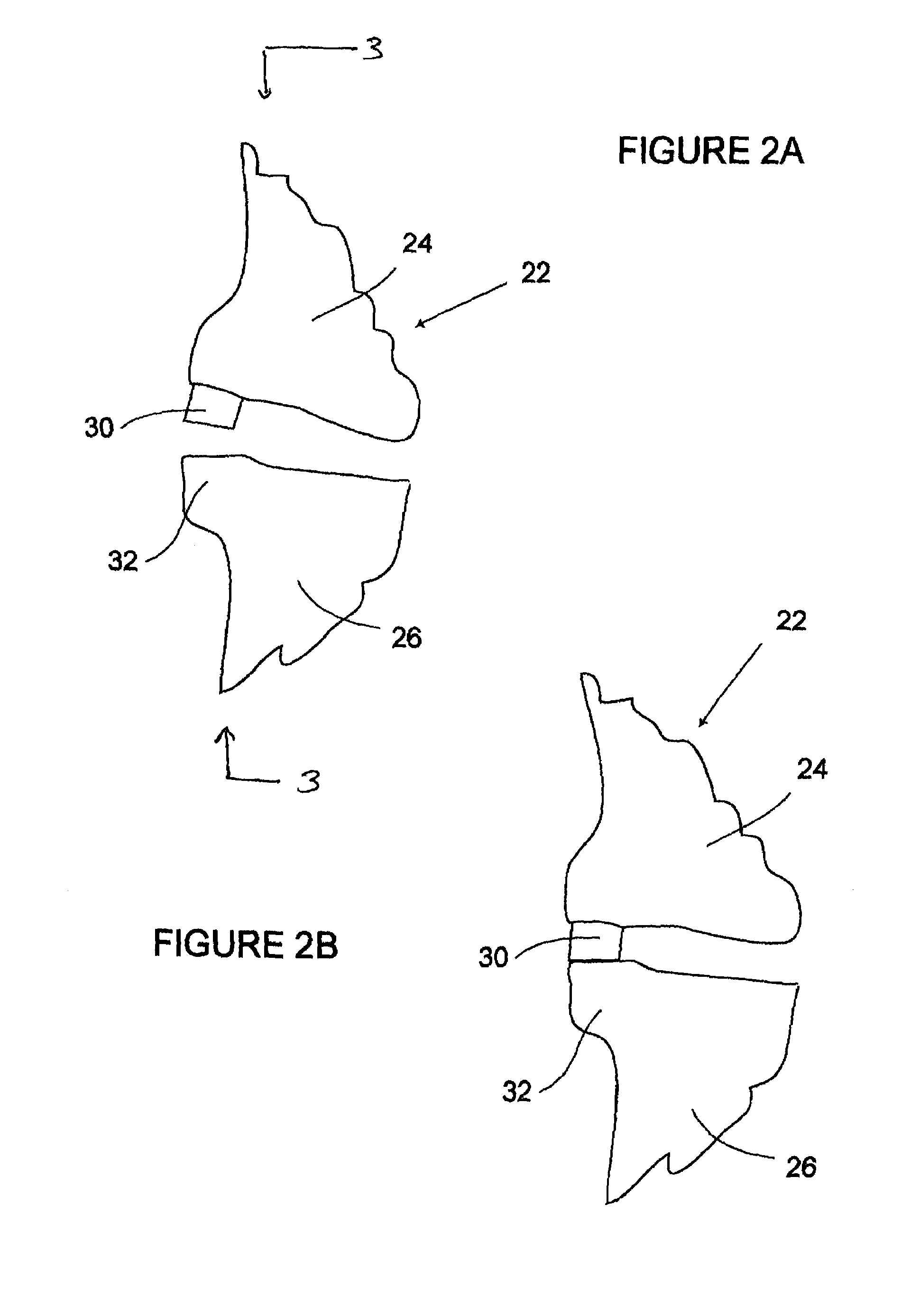Methods of making and using an ankle-foot orthosis
a technology for ankles and feet, applied in the field of improving ankle-foot orthosis, can solve the problems of tripping and falling, tiresome walking with a steppage gait, and tripping and falling of feet, and achieve the effect of improving the function and performance of the orthosis and being convenient to us
- Summary
- Abstract
- Description
- Claims
- Application Information
AI Technical Summary
Benefits of technology
Problems solved by technology
Method used
Image
Examples
Embodiment Construction
[0038]Stop mechanisms, also referred to as plantar stops and motion limiters, made in accordance with the invention generally restrict the motion of an ankle-foot orthosis by limiting plantar flexion. The stop mechanisms of the present invention are particularly useful because they are designed as part of a complete system that allows for the creation of particularly small, but highly functional, posterior plantar stops. In addition, the plantar stops can be made easily with a minimum of steps and tools, and can be produced quickly.
[0039]The stop mechanisms typically include a removable stopping bumper configured to contact a bumper rest, the removable stopping bumper comprising a head and a stem, the head configured to contact the bumper while the stem is configured for insertion into a cavity in an orthosis. The stopping bumper is removable from the cavity in the orthosis so that it can be replaced with a bumper of a different thickness in order, for example, to allow a patient gr...
PUM
 Login to View More
Login to View More Abstract
Description
Claims
Application Information
 Login to View More
Login to View More - R&D
- Intellectual Property
- Life Sciences
- Materials
- Tech Scout
- Unparalleled Data Quality
- Higher Quality Content
- 60% Fewer Hallucinations
Browse by: Latest US Patents, China's latest patents, Technical Efficacy Thesaurus, Application Domain, Technology Topic, Popular Technical Reports.
© 2025 PatSnap. All rights reserved.Legal|Privacy policy|Modern Slavery Act Transparency Statement|Sitemap|About US| Contact US: help@patsnap.com



